 READ HABITABLE’S NEW REPORT
READ HABITABLE’S NEW REPORT…that some chemicals used for stain or water repellency in building products last longer than nuclear waste?
In fact, as far as can be determined, the most studied of these perfluorinated chemicals, perfluorooctane sulfonate (PFOS) – formerly the key chemical in Scotchgard™ – never breaks down in the environment.[1]
Perfluorinated compounds (PFCs) are manmade compounds, based on the element fluorine, and are the key ingredients in stain- and water-repellent treatments such as Teflon®, Crypton® and Crypton Green®, Gore™, and Stainmaster®, and in nanotech products such as Nano-Tex™ and GreenShield™.[2] Scientists have raised concerns about PFCs because they are persistent, bioaccumulative, and toxic. Moreover, biomonitoring studies confirm widespread human exposure to this class of compounds.
Scientific studies have linked PFCs with developmental toxicity, cancer, thyroid, liver and immune system functions, cholesterol increases, and low birth measurements in newborn humans.[3] The health issues associated with PFCs, coupled with alarming data about the increasing chemical burden of these compounds in our bodies,[4] as well as the widespread exposure in wildlife, have prompted scientists and public health experts to express increasing concern about continued use of these chemicals.
In May 2009, the Stockholm Convention on Persistent Organic Pollutants (POPs) added PFOS to a growing list of chemicals recognized by international treaty as chemicals of greatest concern to be reduced or eliminated in the global environment, putting them in league with widely recognized threats such as dioxin and PCBs.
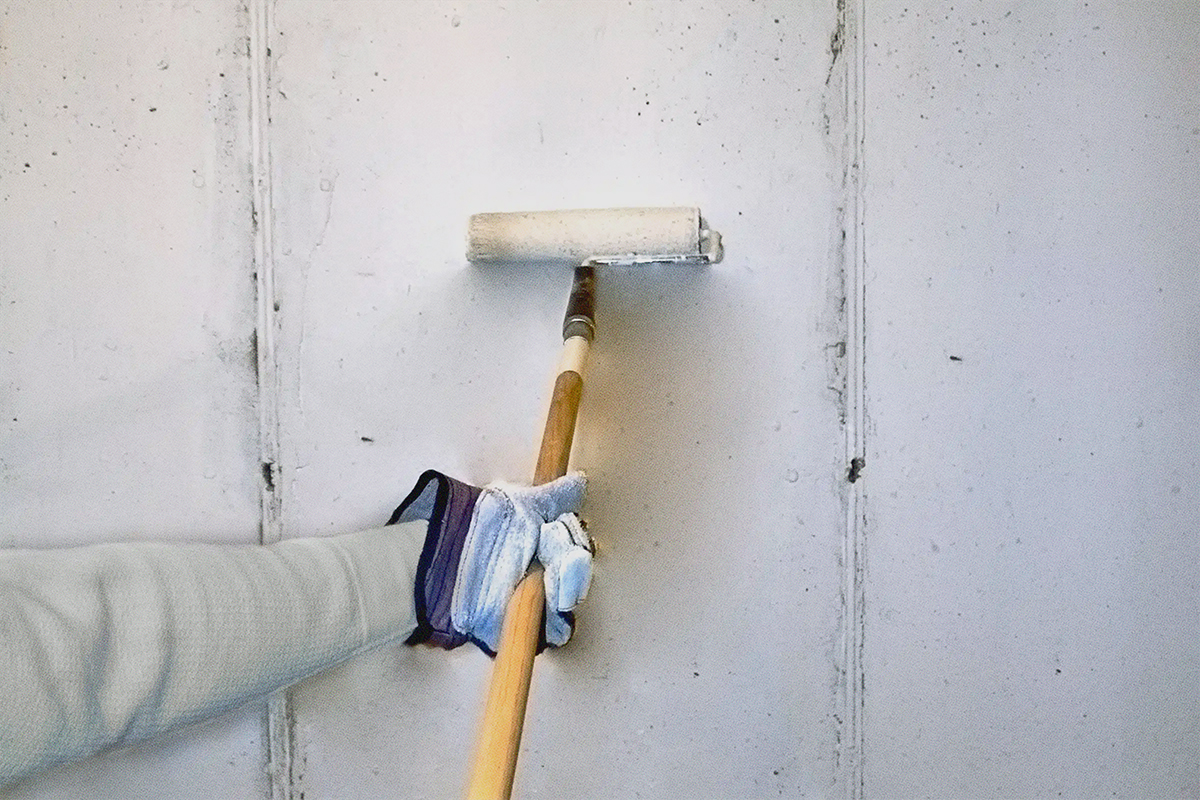
In the U.S., most major fabric treatment brands continue to use PFCs as chemical manufacturers rush to replace the most well-studied PFCs with similar fluorinated compounds that have not been heavily scrutinized. Although chemical manufacturers such as DuPont resist releasing information about the new compounds, it is clear that some are virtually unstudied, and some that scientists have studied are breaking down to PFOS and perfluorooctanic acid (PFOA), which would add to the reservoir of these persistent contaminants in the general environment. In June 2008, the Environmental Working Group (EWG) released a report on PFCs, which uncovered evidence that manufacturers’ own tests showed that many of the alternative chemicals lead “to a conclusion of substantial risk to human health or to the environment.”[5]
Like nuclear waste, the problem of PFCs isn’t going away. Still, there are steps that can be taken today to stem the tide of PFCs accumulating in our bodies. For many of the PFC applications, we can start out by simply asking ourselves whether we really need these chemicals at all.
For those wanting to understand more about PFCs and potential health concerns, HBN and Kaiser Permanente have produced a paper that examines PFCs in more detail.
SOURCES
- Co-operation on Existing Chemicals – Hazard Assessment of Perfluorooctane Sulfonate and its Salts. Environment Directorate Joint Meeting of the Chemicals Committee and the Working Party on Chemicals, Pesticides, and Biotechnology, Organisation for Economic Co-operation and Development, Paris. November 2002. http://www.oecd.org/dataoecd/23/18/2382880.pdf.
- In addition to these products which are widely used to create water and soil repellency in fabric, furniture, and carpet, PFCs are found elsewhere including fire fighting foams, metal plating, and within the photographic industry.
- References for these health impacts and the chemical burden concerns outlined below can be found in the report Perfluorinated Compounds (PFCs) and Human Health Concerns, from the Global Health and Safety Initiative, http://www.healthybuilding.net/healthcare/2009-04-20PFCs_fact_sheet.pdf.
- Calafat A, Kuklenyik Z, Reidy J, Caudill S, Tylly J, Needham L. Serum Concentrations of 11 Polyfluoroalkyl Compounds in the U.S. Population: Data from the National Health and Nutrition Examination Survey (NHANES) 1999-2000. Centers for Disease Control and Prevention. 2007. http://www.cdc.gov/exposurereport/perfluorinated_compounds_3.html.
- Nadenko O, Sharp R. Credibility Gap: Toxic Chemicals in Food Packaging and DuPont’s Greenwashing: New Chemicals and Risks are Confidential. Environmental Working Group Report. June 2008. http://www.ewg.org/reports/teflongreenwash. Accessed April 15, 2009.
…that some building products may expose you to the chemical banned from plastic bottles?
Everyone has heard the news about the health concerns associated with bisphenol A (BPA) leaching from baby bottles, food can liners and perhaps most famously those distinctive polycarbonate plastic water bottles popularized by Nalgene.[1] Last May, Chicago became the first city in the U.S. to ban the sale of baby bottles and sippy cups made from BPA. Few, however, are aware that BPA is a chemical component of epoxy resins used in a wide range of building materials, typically paints, sealants, adhesives and fillers,[2] that may put manufacturing workers, installers, and building occupants at risk.
Epoxy resins are used in building materials, often listed on a material safety data sheet as a proprietary mixture, without disclosure that the resin is made from BPA. While manufacturers claim that the BPA in epoxy resins is consumed entirely in the production process and does not show up in the final products, scientists investigating the metabolic breakdown of epoxy resins during occupational exposure have found that epoxy resin products can be metabolized in the human body back into BPA and may impact the endocrine and reproductive system of those exposed.[3]Animal studies have linked this hormone-disrupting chemical to prostate cancer, breast cancer, pre-diabetes (insulin resistance), abnormal fat metabolism, early puberty, and changes in the way the brain develops resulting in behavioral abnormalities.[4]
The BPA expert panel from the Center for Evaluation of Human Risks to Reproduction raised concern about BPA in epoxy-based resins, reporting to the National Toxicology Program that, “several studies collectively suggest hormonal effects of bisphenol A exposure, including one in occupationally exposed male workers likely exposed through multiple routes including inhalation…”[5] The NTP’s final monograph states that “a number of studies, when considered together, suggest a possible effect on reproductive hormones, especially in men exposed to higher levels of bisphenol A in the workplace.”[6] Germany has already instituted occupational exposure limits for bisphenol A.[7]
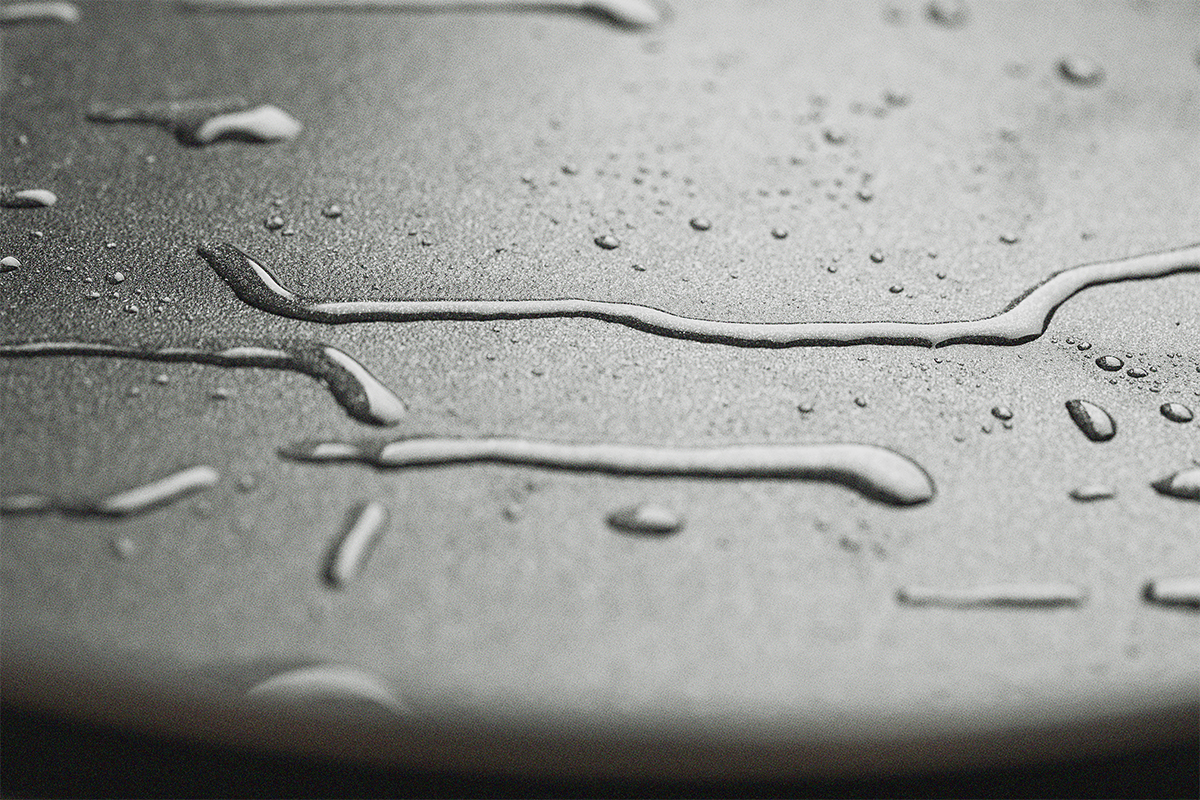

Recent biomonitoring studies have raised concerns about widespread human exposure to BPA. A National Health and Nutrition Examination Survey (NHANES) study found that more than 90% of people in a representative sample of the general population have BPA residues in their urine[8] and that there must be significant non-food exposures to reach such levels.[9]
It is likely that BPA in building products will become subject to greater health and safety regulation, but responsible specifiers do not need to wait for the regulatory system to catch up with the science to protect their clients. Products are available that can replace epoxy-based coatings and adhesives. For example, many paint companies now offer high-performance low-VOC water-based acrylic paints and acrylic-based adhesives for flooring, carpets, and wall covering. For applications where high-performance BPA-free substitutes are not yet available, the act of asking manufacturer reps for products without bisphenol A is an important step to prod the industry to bring safer high performance alternatives to market.
For a comprehensive discussion of the emerging science on BPA risks, read “Bisphenol A in Building Materials: High Performance Paint Coatings.”
SOURCES
- BPA is also known as a component of dental sealants, some medical and dental devices, and thermal paper receipts.
- Epoxy-based products are used in a wide range of applications including coatings (such as paints, floor sealers and protective coatings), adhesives and fillers (including caulks, grouts, mortars, and putties), fiberglass binders and cement additives. Epoxy resins are also in some wind energy applications, generators and other electronic equipment, industrial tooling applications, and materials used in the art, aerospace and marine industries.
- Hanaoka T, Kawamura N, Hara K, Tsugane S. Urinary bisphenol A and plasma hormone solvents in male workers exposed to bisphenol A diglycidyl ether and mixed organic solvents. Occupational and Environmental Medicine, 2002; 59:626; Cha B, Koh S, Park J, et. al. Influence of Occupational Exposure to Bisphenol A on the Sex Hormones of Male Epoxy Resin Painters. Mol Cell Toxicol. 2008; 4(3): 230-234.
- Sarah Janssen, staff scientist for the NRDC, summarizes health concerns and the issue with links to some of the key science on her 7/13/09 blog entry “California is the latest battleground on BPA regulation”. http://switchboard.nrdc.org/blogs/sjanssen/many_of_my_blog_posts.html.
- Expert Panel cited in NTP-CERHR Monograph on the Potential Human Reproductive and Developmental Effects of Bisphenol A page 15. http://cerhr.niehs.nih.gov/chemicals/bisphenol/bisphenol.pdf.
- Ibid at page 37.
- Murakami T, Oyama T, Isse T, et al. International comparison of criteria for evaluating sensitization of PRTR-designated chemical substances. Environmental Health and Preventive Medicine 2007;12:56–65, citing Deutsche Forschungsgemeinshaft. List of MAK and BAT Values 2004, Commission for the investigation of health hazards of chemical compounds in the work area, Report No. 40. Weinheim: Wiley-VCH Verlag GmbH & Co. KGaA; 2004.
- Calafat A., et. al., Urinary concentrations of bisphenol A and 4-nonylphenol in a human reference population. Environ. Health Persp. 2005; 113(4): 391-395. http://www.ehponline.org/members/2004/7534/7534.html. Accessed online June 20, 2009.
- Stahlhut R, Welshons W, Swann S. Bisphenol A data in NHANES suggest longer than expected half-Life, substantial nonfood exposure, or both. Environ Health Perspect. (2009); 117(5):784-789. http://www.ehponline.org/docs/2009/0800376/abstract.html. Accessed online July 20, 2009.
In Doubt Is Their Product, Dr. David Michaels, a former Assistant Secretary of Energy for Environment, Safety and Health under President Clinton, exhaustively documents the rise of the “product defense industry” and its strategy of using scientific discipline to establish controversies (i.e., starting something that is intended to continue or be permanent[1]), rather than establish facts (i.e., investigating something to confirm its truth or validity[2]) as a means of frustrating efforts to address public health risks from asbestos, benzene, aspirin (Reye’s syndrome in children), global warming and, of course, vinyl.
“Doubt is our product,” wrote a Brown and Williamson[3] executive in 1969, three years after the iconic warning label first appeared on cigarette packs, “since it is the best means of competing with the ‘body of fact’ that exists in the minds of the general public. It is also the means of establishing a controversy.”[4]
Michaels concentrates his reporting on his considerable first-hand experiences where, he writes, “I had the opportunity to witness what is going on at close range.”[5] He bears witness for 256 pages and backs up his observations with an additional 119 pages of endnotes, many of these referencing original documents that can be accessed through his website, www.defendingscience.org.
One of his first-hand experiences involves polyvinyl chloride plastic, also known as PVC or vinyl. The story of the vinyl industry’s cover-up of rare cancers among its workers in the mid-1970’s has been well documented elsewhere[6], including the documentary Blue Vinyl and the PBS investigative report Trade Secrets. Michaels connects the dots, documenting how, in 1974, the same public relations firm that created the “selling doubt” strategy for the tobacco industry would “establish uncertainty” about the risks of vinyl chloride for the PVC industry. They’re still at it.
Doubt Is Their Product concludes with a chapter offering “a dozen ways to improve our regulatory system.” Many of these could be adapted by green building policy makers or by anyone interested in testing whether an industry stakeholder is interested in establishing the facts, or just establishing a perpetual controversy.[7]
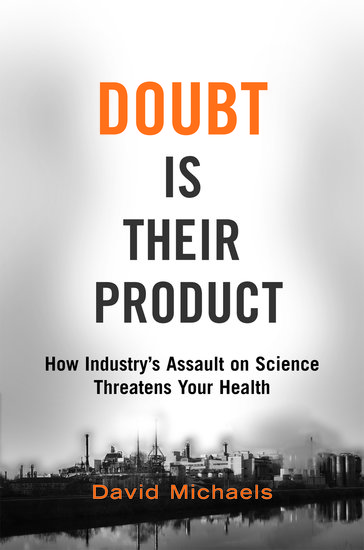
SOURCES
- Encarta® World English Dictionary ©1999 Microsoft Corporation.
- Ibid.
- Brown & Williamson was an American tobacco company and subsidiary of the giant British American Tobacco, that produced several popular cigarette brands including: Kool, Lucky Strike, Pall Mall and Viceroy. It became infamous as the focus of investigations for chemically enhancing the addictiveness of cigarettes. Its former vice-president of research and development, Jeffrey Wigand, was the whistleblower in an investigation conducted by the highly respected CBS news program 60 Minutes, an event that was dramatized in the film The Insider. Wigand claimed that B&W had introduced chemicals such as ammonia into cigarettes to increase nicotine delivery and increase addictiveness. Brown & Williamson had its headquarters at Louisville, Kentucky until July 30, 2004, when the U.S. operations of Brown & Williamson merged with R.J. Reynolds, creating a new publicly traded parent company, Reynolds American Inc. Source: http://en.wikipedia.org/wiki/Brown_and_Williamson.
- Doubt Is Their Product, p. 11, footnote 43, document available at http://legacy.library.ucsf.edu/tid/nvs40f00.
- Doubt Is Their Product, Introduction, p. x.
- See, e.g. Deceit and Denial: The Deadly Politics of Industrial Pollution. Gerald Markowitz and David Rosner. University of California Press, 2002. See also Toxic Sludge is Good For You and Trust Us We’re Experts, both by John Stauber and Sheldon Rampton, and The Republican War on Science, by Chris Mooney.
- These include e.g., (#1) Require full disclosures of any and all sponsor involvement in scientific studies; (#3) Manufacturers must disclose what they know about the toxicity of their products; (#5) Hold real people accountable for the accuracy—and completeness – of statements of corporations and trade groups.
Chemicals From Common Products Create “Toxic Cocktail” in Homes
Toxic chemicals common to home furnishings and electronic equipment have been found in household dust, including chemicals internationally recognized as harmful or toxic to the immune and reproductive systems; babies and young children are particularly at risk from exposure. That is the finding of a 2005 report, Sick of Dust: Chemicals in Common Products, which investigated six classes of chemicals in dust samples taken from 70 homes in seven states across the U.S. Among the chemicals documented in household dust are two — phthalate plasticizers and organotin stabilizers — that are ubiquitous in PVC vinyl building materials.
of phthalates manufactured are used in PVC products, and have been documented as leaching from shower curtains and flooring.
Animal studies have found phthalates disrupt reproductive systems, particularly in male offspring, and can contribute to male infertility. Phthalates have also been linked to asthma and respiratory problems in children.
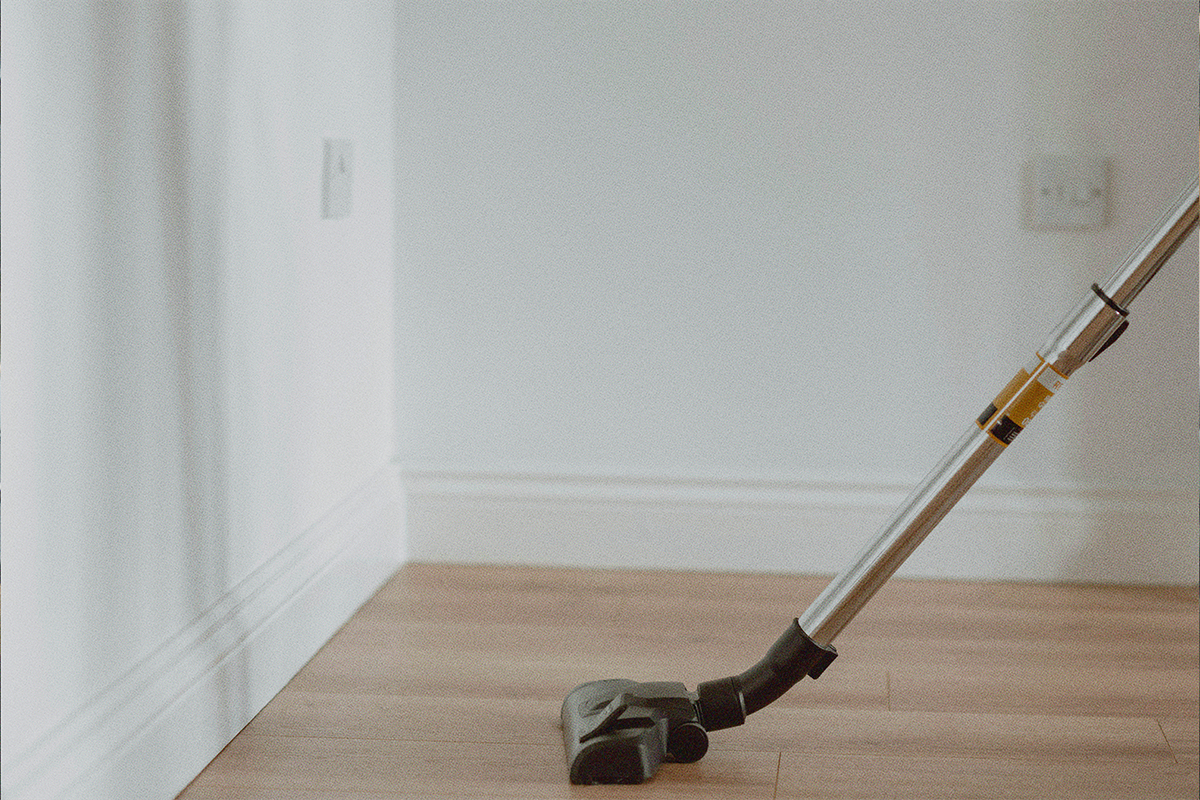
Organotins, which are found in PVC water pipes, PVC food packaging materials, and many other consumer products, are poisonous in even small amounts, and can disrupt the hormone, reproductive, and immune systems.
In addition to the two chemicals commonly associated with PVC building materials, the report also found high concentrations of brominated flame retardants, which are incorporated into many plastics, including PVC, and electrical goods. Studies have revealed the breast milk of American women has 10 to 100 times higher concentration of PBDE, a type of flame retardant, than European women. According to Sick of Dust, a recent study indicates that levels of PBDE in Swedish breast milk began to decrease in 1997, possibly due to a voluntary phase-out of penta-DBE.
These findings add to the momentum of an anti-PVC movement which, according to a feature article in the Christian Science Monitor, is “picking up steam,” and provide additional ammunition for the many commenters who took aim at the USGBC’s draft PVC report that found “PVC does not emerge as a clear winner or loser.”
The Sick of Dust report ranks brand name companies and retailers on their use of hazardous chemicals, and provides an outline of fundamental changes needed to bring American chemical regulation up to a level that will protect basic health today and in future generations. But the easiest way to eliminate phthalates and organotins from household dust is to eliminate PVC from the household.
To breathe, I have to take way too many medicines today – each with their side effects.
I’m an adult. Imagine a child having to wade through all the symptoms and medicines associated with asthma.
Many factors contribute to the development and aggravation of asthma. However, I am wondering whether the installation of PVC flooring in my bathroom and kitchen contributed to the worsening of my breathing.
The floor was laid three years ago. A slow leak under my sink went unnoticed until the downstairs’ neighbor’s ceiling fell. About this time, my life-long respiratory ailments worsened.
Scientists are investigating the relationship between moisture, PVC flooring, and asthma.
In Sweden, a study of 10,851 children found the presence of both floor moisture and PVC significantly increased the risk of asthma.[1] The incidences were higher in multiple family dwellings where a higher percentage of PVC flooring was found.
Many workers in an office building in Finland, over a short period of time, were diagnosed with adult-onset asthma at a rate of about 16 times higher than expected.[2] An investigation uncovered in the office air space high levels of volatile chemicals, such as 2-ethyl-l-hexanol, l-butanol, which are degradation by-products of vinyl. The problem was traced back to damp concrete surfaces below the PVC flooring.
The PVC flooring was removed and surface of the concrete slab warmed up enough to remove the volatiles that had been diffused within. In rooms cleaned up in this manner and floors replaced with ceramic tile, the emissions of the three main volatiles (2-ethyl-l-hexanol, l-butanol, and 3-heptanone) decreased, as did employees’ symptoms and many asthma patients’ needs for medication.

Furthermore, studies have linked dust containing phthalates from homes with PVC flooring with an increase in asthma.
To make it less brittle, PVC is coated with plasticizers called phthalates. These chemicals evaporate and enter the air space where they adhere to dust particles.[3] New research shows that dust from homes containing PVC floors has higher levels of phthalates – particularly di(2-ethylhexyl) (DEHP) – than dust from homes without vinyl floors. One recent case-control study found an association between dust concentrations of phthalates inside homes and asthma, rhinitis and eczema.[4] The presence of PVC flooring in the child’s bedroom was the strongest predictor of respiratory ailments.
Other studies reach similar conclusions,[5] with one recommending “avoidance of PVC flooring in homes with small children” as a simple first step.[6]
Avoiding PVC flooring isn’t difficult, but it’s often disregarded as a cost-cutting measure.
Meanwhile, the costs associated with the increase in rates of asthma keep adding up. According to officials in my home state of Massachusetts, asthma is the number one preventable cost to hospitals.[7]
Prescription costs, doctors’ fees, lost wages due to time off from work for parents of asthmatic children, and the un-quantifiable cost of school absenteeism add up to a hefty burden for families and society.
Alternatives to PVC that are easier on the lungs exist today.
By switching to safer products we could be offering a child the priceless gift of easy breathing.
Guest columnist Niaz Dorry is a veteran activist and writer living in Gloucester, Massachusetts. She works with small-scale, traditional, and indigenous fishing communities in the U.S. and from around the globe to advance the rights and ecological benefits of the small-scale fishing communities as a means of protecting global protect marine biodiversity. In 1998, Time Magazine named Niaz as a Hero For The Planet for this work. Her fisheries articles appear regularly in a range of publications.
SOURCES
- Bornehag, C.G., Sundell , J., Hägerhed , L., Janson, S., and the DBH-study group, “Dampness In Buildings And Health. Dampness At Home As A Risk Factor For Symptoms among 10 851 Swedish Children” (DBH-STEP 1) (2002), SP Swedish National Testing and Research Institute and the International Centre for Indoor Environment and Energy, Technical University of Denmark Karlstad University, Sweden.
- Tuomainen, A., Seuri, M., Sieppi, A. “Indoor Air Quality And Health Problems Associated With Damp Floor Coverings In An Office Building” (2002), Kuopio Regional Institute of Occupational Health, Department of Occupational Hygiene and Toxicology, Kuopio, Finland; Kuopio Regional Institute of Occupational Health, Department of Occupational Medicine, Kuopio, Finland; and, Medivire Occupational Health Center, Kuopio, Finland.
- Katherine M. Shea, MD, MPH, and the Committee on Environmental Health; “Pediatric Exposure and Potential Toxicity of Phthalate Plasticizers.” Technical Report. American Academy of Pediatrics. PEDIATRICS Vol. 111 No. 6 June 2003.
- Carl-Gustaf Bornehag, Jan Sundell, Charles J. Weschler, Torben Sigsgaard, Björn Lundgren, Mikael Hasselgren, Linda Hägerhed-Engman, “The Association Between Asthma and Allergic Symptoms in Children and Phthalates in House Dust: a Nested Case-Control Study, Environmental Health Perspectives, July 15, 2004 (The National Institute of Environmental Health Sciences, National Institutes of Health, U.S. Department of Health and Human Services).
- Ruthann Rudel and Julia G. Brody, Silent Spring Institute, Newton MA; David Camann, Southwest Research Institute, San Antonio, TX; John Spengler, Harvard School of Public Health, Boston, MA; Leo Korn, UMDNJ, New Brunswick, NJ, “Phthalates, Alkylphenol, Pesticides, Polybrominated Diphenyl Ethers, and Other Endocrine Disrupting Compounds in Indoor Air and Dust,” Environmental Science & Technology, September 13, 2003.
- Haumann , T. and Thumulla, J., “Semi Volatile Organochemicals In Indoor Environment – Chlorinated Phosphorus And Organotin Compounds In Material Und House Dust Samples” (2002) Umweltanalytik und Baubiologie, Essen, Germany. AnBUS e.V., Fürth, Germany.
- Remarks of Massachusetts Division of Health Care Finance Policy official at the Massachusetts Department of Public Health’s conference on asthma, March 23, 2002.
Hyperbole? No.
PVC manufacturing consumes in excess of 40 per cent of the chlorine gas produced in this country, making it the nation’s single largest user of the deadly chemical. By comparison, 5 percent of the nation’s chlorine gas is used to disinfect water – and that includes sewage treatment.
Chlorine gas kills and maims in a manner so heinous that it was banned as a chemical weapon after the battlefield experiences of World War I. Today, according to the Washington Post, anti-terrorist experts say there is “little doubt that plants storing large amounts of chlorine and other toxic chemicals are potential terrorist targets.” These chemicals are even more vulnerable while in transit, as the Wall Street Journal proved by following graffiti artists as they “tagged” chlorine tank cars within site of the US Capitol building, long after 9-11.
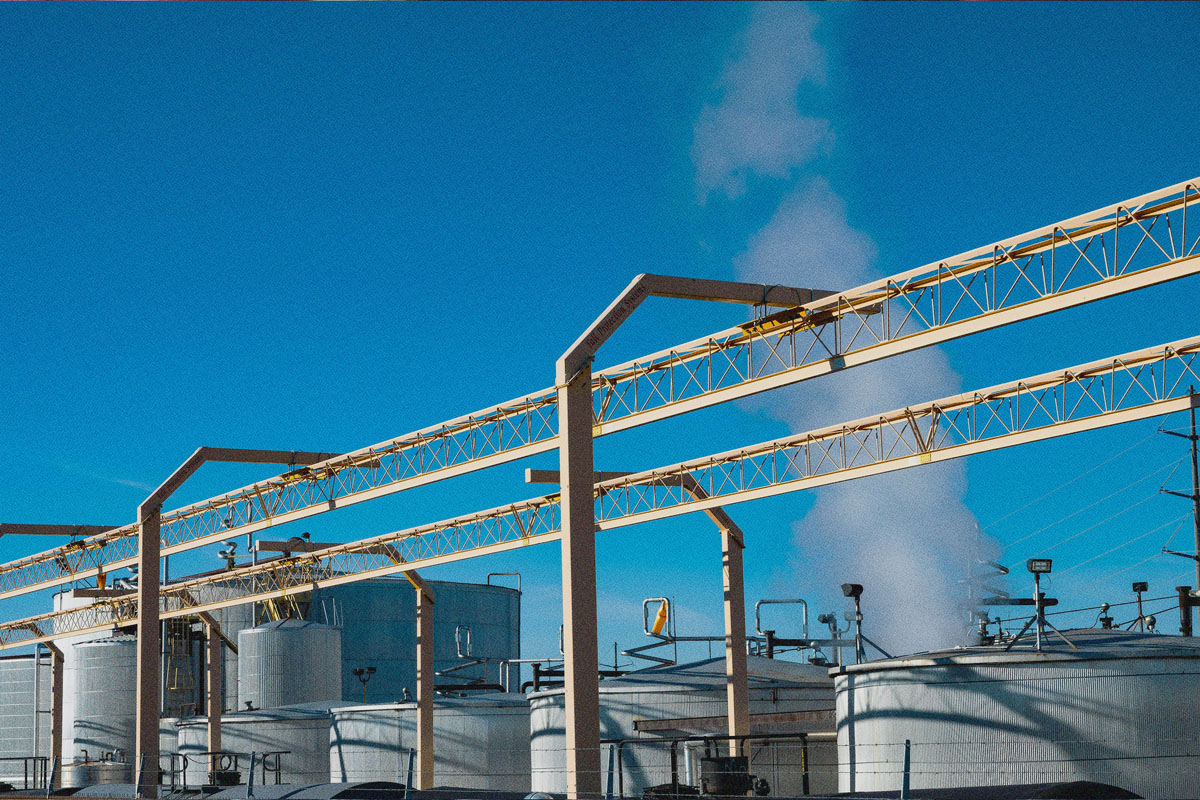
The chemical industry’s own estimates reveal that if the chlorine from just one tank car were released by accident, sabotage or direct attack, the toxic gas could travel two miles in 10 minutes and remain lethal as far away as 20 miles.
Based on testimony by Dr. Jay Boris, Chief Scientist at the US Naval Research Laboratory, 3 minutes after a catastrophic rupture of a rail car in Washington, DC, a lethal cloud could reach the National Mall. On July 4th, when thousands gather to watch the fireworks display, people could die at the rate of 100 per second.
For this reason, Washington DC’s water treatment plant phased-out chlorine gas after 9-11. In New Jersey, after the passage of the Toxic Catastrophe Prevention law, the number of water works using chlorine has dropped from 575 in 1988 to just 22 in 2001.
These precautions are laudable, and verify chlorine reduction as a legitimate chemical security strategy. But ten times more chlorine is destined for PVC plastic than for municipal water treatment. PVC plastic can contain up to 50% chlorine by weight. By comparison, household bleach is typically less than three percent chlorine.[1]
Building materials account for more than 70% of all products manufactured of PVC. If we are willing to change the way we sanitize our drinking water in order to chip away at 5% of the vulnerable chlorine stockpile, what is the overriding interest that justifies keeping nearly ten times that amount on tap to make faux clapboard siding, picket fences, and vinyl flooring?
In an era of security alerts Yellow, Orange and Red, how can PVC be considered green?
SOURCES
- Calculation based on a 6% sodium hypochlorite solution, sodium hypochlorite is 50% chlorine.
Lessons From The Formosa PVC Plant, Illiopolis, Illinois
One morning ten years ago, I was at work on a book about environmental health when the phone rang. It was my Uncle Roy. He wanted me to know that a developer had come to town peddling a plan to construct a giant waste incinerator in the cornfield next to his own. What the man was planning to burn in it, he said, was old auto interiors, including a lot of PVC plastic. If the people of the township went along, the company would build the school a new library.
Now how did they know we needed a library, my uncle wondered. And what did I know about a chemical called dioxin? Funny he should ask. I was just drafting that chapter.
So I took leave of the Harvard Medical School Library and went back home to library-less central Illinois to throw my hat in the ring with my mother’s brother and a group of other farmers who had vowed to fight the incinerator.
And we won. Not only did Forrest, Illinois vote down the incinerator plan, it was defeated in six other small, impoverished farming communities where the same developer had dangled it. People looked out at their turkeys, hogs, and fields of corn and imagined what could happen if one semi-truck full of dioxin-laden incinerator ash overturned on a windy day. It just wasn’t worth the risk, they decided.
A decade later, central Illinoisians are confronted with a similar choice. This time it involves the manufacture of PVC rather than its destruction.

On April 23, 2004, the PVC plant in Illiopolis, Illinois exploded, spewing fireballs into the night sky, cutting power and water, and sending all of the village’s 900-something inhabitants into makeshift shelters in distant towns. Four workers were killed instantly. Three were hospitalized.
The U.S. Chemical Safety and Hazard Investigation Board conducted an investigation of the long-term environmental health effects of the explosion. Its chairwoman, Carolyn W. Merritt, called the explosion at Illiopolis among the most serious the agency has ever investigated. So far, no signs of air or water contamination have been uncovered. On the other hand, at this writing, investigators were not able to get closer than a quarter mile to the plant because of safety concerns.
But, let’s suppose that no chemical contamination from the plant’s destruction was found. Let’s imagine that thousands of pounds of vinyl chloride and vinyl acetate-which workers were mixing at the time of detonation-somehow all burned up without leaving behind any toxic residues in the community’s air or water or farm fields. It would still be a bad idea to rebuild this plant. Which is the current plan.
Each year, the Illiopolis PVC plant releases into the air more than 40,000 pounds of vinyl chloride, a recognized human carcinogen and reproductive toxicant. It releases another 40,000 pounds of vinyl acetate, a suspected carcinogen and neurotoxin. In other words, under normal operating conditions, this plant routinely discharges into the surrounding community more than 40 tons of toxic chemicals annually. That works out to 220 pounds of known and probable carcinogens every single day. The weight of a large man.
Such releases make this plant one of Illinois’ biggest polluters. But when you stack the Illiopolis facility next to all the other PVC plants in the United States, of which there are about 40, it pales in comparison. Its emissions are far from the worst. (Oxyvinyl in Pasadena, Texas releases more than 100,000 pounds of vinyl chloride annually.)
Even absent horrific accidents like the one in Illiopolis, which made headlines across the world, there seems to be no way of making PVC without contaminating somebody’s beloved hometown with cancer-causing substances. And that fact alone should be sufficient to compel us to seek out substitutes for PVC for all its various uses.
Here are the names of those who died in the Illiopolis explosion: Joseph Machalek, age 50; Larry Graves; age 47; Glenn Lyman, age 49; Linda Hancock, age 56.
What are the names of those who have died of cancer caused by the routine operation of this same plant over the years? Who have suffered miscarriages, birth defects, or neurological disorders due to their constant exposure to reproductive and neurological poisons? It is an unknown and unknowable number. But it may well exceed four. And it may be too high a price to pay for vinyl.
Sandra Steingraber, Ph.D., grew up in Pekin, Illinois. She is a biologist and author of the book Living Downstream: An Ecologist Looks at Cancer and the Environment. She is currently on the faculty of Ithaca College in New York.

 Health
Health Pollution
Pollution